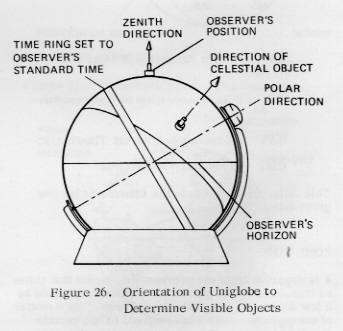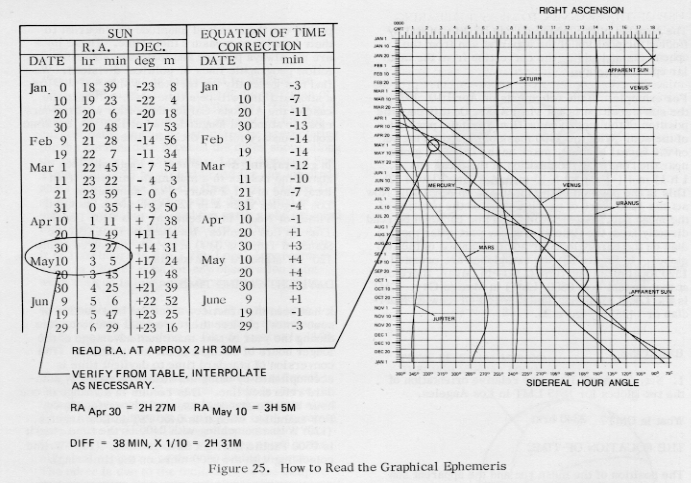| Next, orient the Uniglobe with
the polar axis pointing to the polar direction (North pole to
the North, South pole to the South) and the observer's position
in the zenith position as shown in Figure 26. Set the time ring
with the 1200 on the mean sun, and orient the celestial globe
to correspond with present zone time at the observer's position
using the oberver's standard longitude. It is now possible to
determine which celestial objects shown on the celestial globe
will be visible from the obeserver's point. To determine which
objects are visible to the observer, place the spanner rosetta
over the observer's position. The local horizon is then determined
by the end of the spanner as it is rotated about the observer's
position. Any object falling between the observer's position
and the end of the spanner (assuming no mountains or other objects
interfere) will be visible. The direction to any object in the
sky can be indicated by placing the pointer on the object and
noting the approximate direction in which to look. (If the sun
is out, no stars are visible.) |
 |

